Franklin Delano Roosevelt (1882-1945), thirty-second president of the United States, led the nation out of the Great Depression and later into World War II. Before he died, he cleared the way for peace, including establishment of the United Nations. Franklin Roosevelt was born on Jan. 30, 1882, of his father's second marriage, to Sara Delano, the daughter of a prominent family. The Roosevelts had been moderately wealthy for many generations. Merchants and financiers, they had often been prominent in the civic affairs of New York. When Franklin was born, his father was 51 years old and semiretired from a railroad presidency, and his mother was 28. Franklin was often in the care of governesses and tutors, until at the age of 14 he went to Groton School. Here he received a solid classical, historical, and mathematical training and was moderately good at his studies. His earnest attempts at athletics were mostly defeated because of his tall, ungainly frame. Roosevelt wanted to go to Annapolis, but his parents insisted on preparation for the position natural for the scion of the Delano and Roosevelt families, so he entered Harvard University. He was a reasonably good student and found a substitute for athletics in reporting for the Harvard newspaper, of which he finally became editor. While seeming to be a Cambridge socialite, he spent an extra year studying public affairs. He also met and determined to marry his cousin, Eleanor, to his mother's annoyance. Eleanor was the daughter of Elliott Roosevelt, a weak member of the family who had died early. Raised by relatives, she received a lady's education but little affection. She was shy and retiring, but Franklin found her warm, vibrant, and responsive. Despite his mother's opposition, they were married in 1905, and Franklin entered Columbia University Law School. He prepared for the bar examinations and without taking a degree became a lawyer and entered a clerkship in the Wall Street firm of Carter, Ledyard and Milburn. He took his duties lightly, however, and it was later recalled that he had remarked to fellow clerks that he meant somehow to enter politics and finally to become president. There was never any doubt of his ambition. Roosevelt's chance came in 1910. He accepted the Democratic nomination for the New York Senate and was elected. Opportunity for further notice came quickly. Although his backing had come from Democrats affiliated with New York City's notorious Tammany Hall, he joined a group of upstate legislators who were setting out to oppose the election of Tammany's choice for U.S. senator. The rebels were successful in forcing acceptance of another candidate. Much of Roosevelt's wide publicity from this struggle was managed by Albany reporter Louis McHenry Howe, who had taken to the young politician and set out to further his career. (This dedication lasted until Roosevelt was safely in the White House.) The Tammany fight made Roosevelt famous in New York, but it also won him the enmity of Tammany. Still, he was reelected in 1912. That year Woodrow Wilson was elected president; Roosevelt had been a campaign worker, and his efforts had been noticed by prominent party elder Josephus Daniels. When Daniels became secretary of the Navy in Wilson's Cabinet, he persuaded Wilson to offer Roosevelt the assistant secretaryship. Assistant Secretary of the Navy As assistant secretary, Roosevelt began an experience that substituted for the naval career he had hoped for as a boy. Before long he became restless, however, and tried to capture the Democratic nomination for U.S. senator from New York. Wilson and Daniels were displeased. Daniels forgave him, but Wilson never afterward really trusted the brash young man. This distrust was heightened later by Roosevelt's departure from the administration's policy of neutrality in the years preceding World War I. Roosevelt openly favored intervention, agitated for naval expansion, and was known to be rather scornful of Daniels, who kept the Navy under close political discipline. America soon entered the war, however, and Roosevelt could work for a cause he believed in. At that time there was only one assistant secretary, and he had extensive responsibilities. Howe had come to Washington with him and had become his indispensable guardian and helper. Together their management of the department was creditable. Though Roosevelt tried several times to leave his civilian post to join the fighting forces, he was persuaded to remain. When the war came to an end and Wilson was stricken during his fight for ratification of the Versailles Treaty, there was an obvious revulsion throughout the United States from the disappointing settlements of the war. It seemed to many that the effort to make the world safe for democracy had resulted in making the world safe for the old empires. The Allied leaders had given in to Wilson's insistence on the creation of the League of Nations only to serve their real interest in extending their territories and in imposing reparations on Germany. These reparations were so large that they could never be paid; consequently the enormous debts the Allies owed to the United States would never be paid either. The American armies had saved Europe and the Europeans were ungrateful. Resentment and disillusion were widespread. The Republican party had the advantage of not having been responsible for these foreign entanglements. In 1920 they nominated Warren G. Harding, a conservative senator, as their presidential candidate. The Democrats nominated Governor James Cox of Ohio, who had had no visible part in the Wilson administration; the vice-presidential candidate was Roosevelt. It was a despairing campaign; but in one respect it was a beginning rather than an ending for Roosevelt. He made a much more noticeable campaign effort than the presidential candidate. He covered the nation by special trains, speaking many times a day, often from back platforms, and getting acquainted with local leaders everywhere. He had learned the professional politician's breeziness, was able to absorb useful information, and had an infallible memory for names and faces. The defeat was decisive; but Roosevelt emerged as the most representative Democrat. Victim of Poliomyelitis Roosevelt retreated to a law connection in New York's financial district again and a position with a fidelity and deposit company. But in the summer of 1921, vacationing in Canada, he became mysteriously ill. His disease, polio-myelitis, was not immediately diagnosed. He was almost totally paralyzed, however, and had to be moved to New York for treatment. This was managed with such secrecy that for a long time the seriousness of his condition was not publicized. In fact, he would never recover the use of his legs, a disability that seemed to end his political career. His mother, typically, demanded that he return to Hyde Park and give up the political activities she had always deplored. He could now become a country gentleman. But Eleanor, joined by Howe, set out to renew his ambition. Roosevelt's struggle during the convalescence of the next few years was agonizing and continually disappointing. Not much was known then about rehabilitation, and he resorted to exhausting courses of calisthenics to reactivate his atrophied muscles. In 1923 he tried the warm mineral waters of Warm Springs, Ga., where exercise was easier. He was so optimistic that he wrote friends that he had begun to feel movement in his toes. It was, of course, an illusion. Roosevelt invested a good part of his remaining fortune in the place. It soon became a resort for those with similar ailments. The facilities were overwhelmed, but gradually an institution was built up, and the medical staff began to have more realistic knowledge of aftereffects. There were no cures; but lives could be made much more tolerable. Meanwhile Roosevelt, realizing that cures were impossible, turned to the encouragement of prevention. (Ultimately, an effective vaccine was found.) New York Governor While at Warm Springs in 1928, Roosevelt was called to political duty again, this time by Al Smith, whom he had put in nomination at the Democratic conventions of 1924 and 1928. Almost at once, however, it became clear that Smith could not win the election. He felt, however, that Roosevelt, as candidate for governor, would help to win New York. Roosevelt resisted. He was now a likely presidential candidate in a later, more favorable year for the Democrats; and if he lost the race for the governorship, he would be finished. But the New Yorkers insisted, and he ran and was narrowly elected. Roosevelt began the 4 years of his New York governorship that were preliminary to his presidency, and since he was reelected 2 years later, it was inevitable that he should be the candidate in 1932. Since 1929 the nation had been sunk in the worst depression of its history, and Herbert Hoover's Republican administration had failed to find a way to recovery. This made it a favorable year for the Democrats. First Term as President It would be more true to say that Hoover in 1932 lost than that Roosevelt won. At any rate, Roosevelt came to the presidency with a dangerous economic crisis at its height. Industry was paralyzed, and unemployment afflicted some 30 percent of the work force. Roosevelt had promised that something would be done, but what that would be he had not specified. Roosevelt began providing relief on a large scale by giving work to the unemployed and by approving a device for bringing increased income to farmers, who were in even worse straits than city workers. Also, he devalued the currency and enabled debtors to discharge debts that had long been frozen. Closed banks all over the country were assisted to reopen, and gradually the crisis was overcome. In 1934 Roosevelt proposed a comprehensive social security system that, he hoped, would make another such depression impossible. Citizens would never be without at least minimum incomes again. Incidentally, these citizens became devoted supporters of the President who had given them this hope. So in spite of the conservatives who opposed the measures he collectively called the New Deal, he became so popular that he won reelection in 1936 by an unprecedented majority. Second and Third Terms Roosevelt's second term began with a struggle between himself and the Supreme Court. The justices had held certain of his New Deal devices to be unconstitutional. In retaliation he proposed to add new justices who would be more amenable. Many even in his own party opposed him in this attempt to pack the Court, and Congress defeated it. After this there ensued the familiar stalemate between an innovative president and a reluctant Congress. Nevertheless in 1940 Roosevelt determined to break with tradition and run for a third term. His reasons were partly that his reforms were far from finished, but more importantly that he was now certain of Adolf Hitler's intention to subdue Europe and go on to further conquests. The immense productivity and organizational ability of the Germans would be at his disposal. Europe would be defeated unless the United States came to its support. The presidential campaign of 1940 was the climax of Roosevelt's plea that Americans set themselves against the Nazi threat. He had sought to prepare the way in numerous speeches but had had a most disappointing response. There was a vivid recollection of the disillusion after World War I, and a good many Americans were inclined to support the Germans rather than the Allied Powers. So strong was American reluctance to be involved in another world war that in the last speeches of this campaign Roosevelt practically promised that young Americans would never be sent abroad to fight. Luckily his opponent, Republican Wendell Willkie, also favored support for the Allies. The campaign, won by a narrow majority, gave Roosevelt no mandate for intervention. Roosevelt was not far into his third term, however, when the decision to enter the war was made for him by the Japanese, whose attack on Pearl Harbor caused serious losses to American forces there. Almost at once the White House became headquarters for those who controlled the strategy of what was now World War II. Winston Churchill came immediately and practically took up residence, bringing a British staff. Together the leaders agreed that Germany and Italy must have first attention. Gen. Douglas MacArthur, commander in the Pacific, was ordered to retreat from the Philippines to Australia, something he was bitterly reluctant to do. But Roosevelt firmly believed that the first problem was to help the British, and then, when Hitler turned East, to somehow get arms to the Soviets. The Japanese could be taken care of when Europe was safe. Hitler's grand strategy was to subdue the Soviet Union, conquer North Africa, and link up with the Japanese, who were advancing rapidly across the Eastern countries. Roosevelt wanted an early crossing of the English Channel to retake France and to force Hitler to fight on two fronts. Churchill, mindful of the fearful British losses in World War I, instead wanted to attack the underbelly of Europe, cut Hitler's lines to the East, and shut him off from Africa. The invasion of Europe was postponed because it became clear that elaborate preparation was necessary. But Allied troops were sent into Africa, with Gen. Dwight Eisenhower in command, to attack Field Marshal Erwin Rommel from the rear. Eventually an Allied crossing to Sicily and a slow, costly march up the Italian peninsula, correlated with the attack across the English Channel, forced the Italian collapse and the German surrender. Meanwhile MacArthur was belatedly given the support he needed for a brilliant island-hopping campaign that drove the Japanese back, destroyed their fleet, and endangered their home island. After the German surrender, the Pacific war was brought to an end by the American atomic bomb explosion over the Japanese cities of Hiroshima and Nagasaki. By this time Roosevelt was dead. He had not participated in that doubtful decision; but he had been, with Churchill, in active command during the war until then. Roosevelt had gone to Warm Springs early in 1945, completely exhausted. He had recently returned from a conference of Allied leaders at Yalta, where he had forced acceptance of his scheme for a United Nations and made arrangements for the Soviet Union to assist in the final subjugation of Japan. The strain was visible as he made his report to the nation. At Warm Springs he prepared the address to be used at San Francisco, where the meeting to ratify agreements concerning the United Nations was to be held; but he found himself unable to enjoy the pine woods and the gushing waters. He sat wan and frail in his small cottage, getting through only such work as had to be done. He finished signing papers on the morning of April 12, 1945. Within hours, he suffered the massive cerebral hemorrhage that killed him. A special train carried Roosevelt's body to Washington, and there he lay in the White House until he was taken to Hyde Park and buried in the hedged garden he himself had prepared. His grave is marked by a plain marble slab, and his wife is buried beside him. He had given the estate to the nation, and it is now a shrine much visited by those who recall or have heard how great a man he was for his time. |
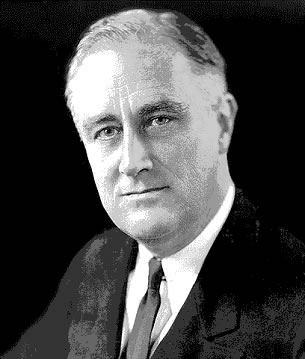 |
Franklin Delano Roosevelt |
|
Born: January 30, 1882 |
|
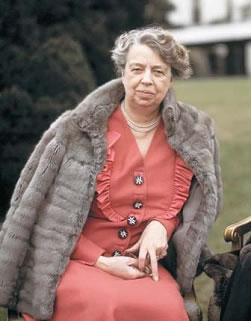 |
|
First lady: Anna Eleanor Roosevelt |
|
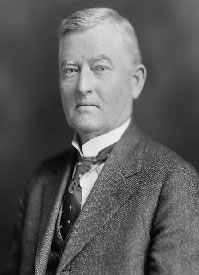 |
|
Vice-president: John Nance Garner (1933—1941) |
|
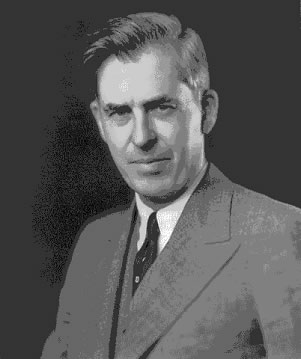 |
|
Vice-president: Henry Agard Wallace (1941—1945) |
|
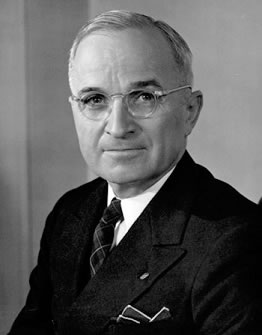 |
|
Vice-president: Harry S. Truman (1945) |
|
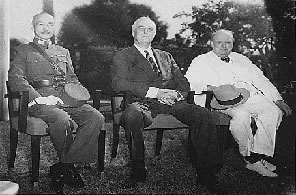 |
|
| Generalissimo Chiang Kai-shek of China (left), Roosevelt (middle), and Winston Churchill (right) at the Cairo Conference in December of 1943 | |
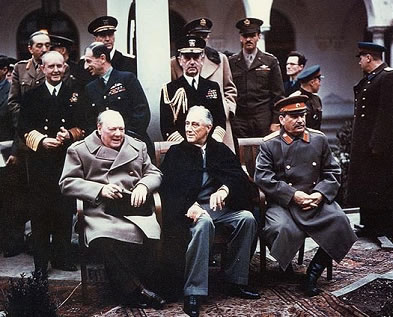 |
|
| Churchill, FDR, and Stalin at Yalta. | |
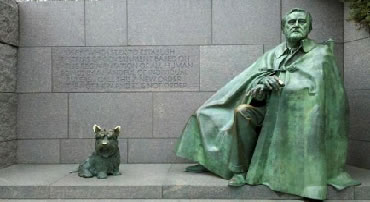 |
|
| Franklin Delano Roosevelt | |
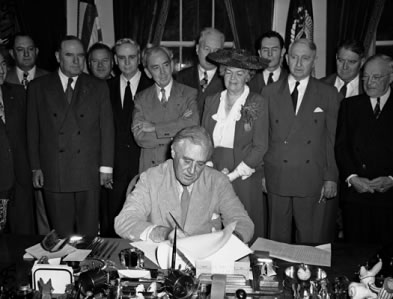 |
|
| President Franklin D. Roosevelt signs the G.I. Bill of Rights on June 22... | |
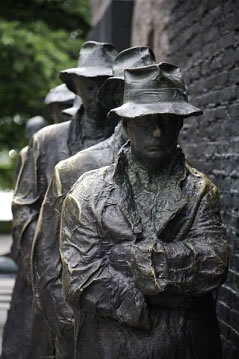 |
|
| Line Sculpture at the Franklin D. Roosevelt Monument in Washington DC. | |
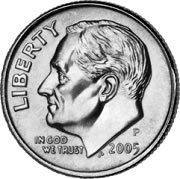 |
|
| Portrait on American dayme | |
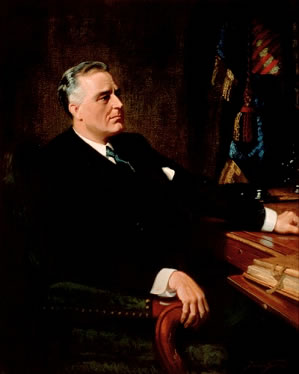 |
|
| Presidential Portrait of Franklin D. Roosevelt. | |
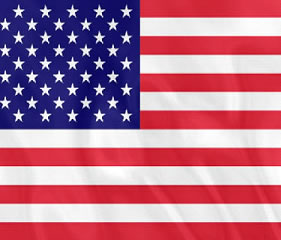 |